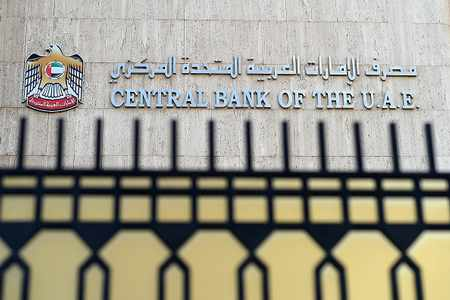UAE aspires to be the top central banks in the world as it joins the CBDC race by unveiling a three-year plan for 2023-2026
Central Bank Digital Currency (CBDC)
The Central Bank of United Arab Emirates (CBUAE) has announced its aspiration to be among the top 10 central bank regulators. The CBUAE has listed seven objectives which notably include driving digital transformation in its financial services sector.
The entire roadmap aims to improve financial inclusion through access to financial services. These aspirations and goals were outlined In an article published by Gulf News.
The central bank’s strategy on digital transformation is heavily based on artificial intelligence and big data solutions. The government will be using UAE pass, a digital identity system to keep track of its citizens.
This is a primary step to improve access to financial services. The UAE pass is the first digital identity and signature solution that enables the citizens to identify themselves to government service providers through a smartphone-based authentication. It also allows the users to sign documents securely.

CBDC are digital currencies issued by central banks. It is centralized and governed by the monetary policy of the sovereign state that issues it. Unlike cryptocurrencies, there is a central body that monitors and controls all transactions that take place. This centralized body can also censor or erase any transaction that it does not approve.
The currency’s digital form facilitates better monitoring for regulatory purposes. It is also a more efficient and cost-effective method of facilitating cross-border transactions.
Building a Bridge through m-CBDC
UAE’s plan for its own CBDC is not a new initiative. In early April, the CBUAE and the Digital Currency Institute of the People’s Bank of China joined a project that explores the capabilities of distributed ledger technology in enhancing financial infrastructure.
The aim is to support multi-currency cross-border payments. Two other parties are also taking part; the Hong Kong Monetary Authority and the Bank of Thailand. This project is known as Multiple Central Bank Digital Currency or m-CBDC.
The existing cross-border payments are inefficient, costly, low transparency, and complex. It is cumbersome to achieve regulatory compliance.
The m-CBDC bridge is meant to allow the participating central banks to use the Distributed Ledger Technology (DLT) to explore scalability, interoperability, privacy, and governance.
China is one of the earliest countries to announce a similar initiative with the digital yuan, its own CBDC. Sovereign nations with their currencies would be unlikely to adopt a digital currency of another nation. Therefore, building a bridge that facilitates a seamless exchange between different currencies while preserving its sovereign governance is ideal.
Future Expectation and Needs of Partners Survey
The CBUAE launched a survey on July 15, listing its seven objectives and inviting key partners to provide their feedback. They listed the issuance of its very own CBDC at the top of its list of objectives.
The government’s effort to seek an opinion from the key partners as it creates a national blueprint for financial inclusivity. It reshapes the current financial landscape, taking a step forward.
In a joint report by the International Monetary Fund (IMF) and World Bank, there is solid support for CBDC to increase cross-border payment efficiency.

CBDC, a Step Towards a Decentralized Financial System?
The CBDC will be using the distributed ledger technology, but it is far from a decentralized and permissionless system. The government has a firmer grip on its monetary policies by improving its ability to track, monitor, and censor transactions that it does not approve.
On the plus side, CBDC is capable of preventing money laundering and financing of terrorism activities. Countries like the UAE depend on foreign trade. With the US greenback falling in dominance, there must be an alternative international medium of exchange. The UAE is looking at m-CBDC.
Source : bsc.news

Founded in 2020, BSCNews is the leading media platform covering decentralized finance (DeFi) on the Binance Smart Chain (BSC). We cover a wide range of blockchain news revolving mainly around the DeFi sector of the crypto markets. BSCNews aims to inform, educate and share information with the global investment community through our website, social media, newsletters, podcasts, research, and live ask me anything (AMA). Our content reaches hundreds of thousands of global investors who are active in the BSC DeFi space.
BSC NEWS is a private news network. All posts posted by this user belong 100% to bsc.news All rights are reserved to BSC NEWS for more information about BSC NEWS contact BSC NEWS HERE.



